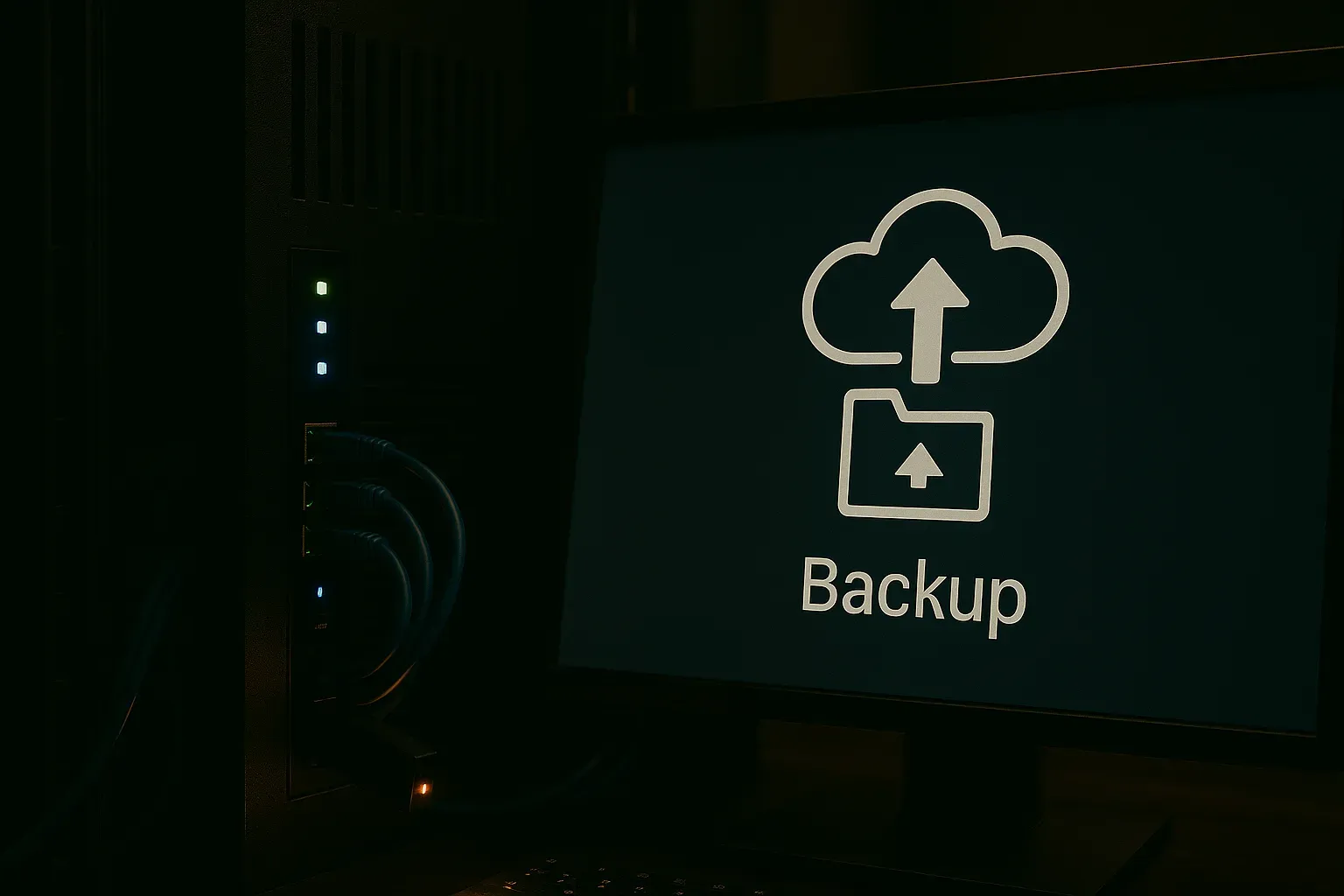
Technology has revolutionized the way clinics and medical offices operate. Today, electronic health records, online scheduling, telemedicine, and financial management depend directly on connectivity. This transformation has brought enormous benefits in agility, security, and professional integration. However, it has also created a critical vulnerability: when the internet goes down, many managers realize that the clinic can simply stop, generating lines, delays, and widespread dissatisfaction.
In this scenario, the essential question arises: is your clinic prepared to continue operating even in the face of unforeseen events? More than relying on a good connection, modern healthcare management requires resilience, redundancy, and systems capable of sustaining operations without halting patient care. In this article, we will analyze how internet outages impact medical clinics, what hidden losses exist, and how smart solutions can turn a risk into an opportunity for growth.
Before we continue, we need to ask: Are you already familiar with Ninsaúde Clinic? Ninsaúde Clinic is a medical software with an agile and complete schedule, electronic medical records with legal validity, teleconsultation, financial control and much more. Schedule a demonstration or try Ninsaúde Clinic right now!

The invisible risk of total internet dependence
The routine of modern clinics is highly digitized. From scheduling appointments to generating financial reports, practically all tasks depend on a constant connection. However, many managers only realize the extent of this risk when they face an unexpected outage: receptionists without access to the schedule, doctors without health records, and patients waiting without any forecast of care. It’s the collapse of the patient journey in just a few minutes.

This risk, although predictable, is often ignored. Excessive trust in internet stability leads managers to believe that failures will not occur—when in reality, outages are common and can happen for various reasons: local issues, provider maintenance, or even structural failures. In this context, lack of preparation can turn a simple setback into significant losses.
Financial and reputational impact in minutes
An hour without internet doesn’t just mean delayed appointments. It represents patients who give up waiting, lost scheduling slots, insurance billing that isn’t processed, and payments that are postponed. This accumulation generates a domino effect: direct revenue loss and a negative impact on patient perception of the clinic.
Reputation also suffers. Patients who encounter disorganization tend to share their negative experiences, whether on social media or directly with others. This impression can drive away new patients and slowly erode the trust built. Thus, the real cost of internet instability goes far beyond immediate financial loss: it affects credibility and competitiveness.
The burden of improvisation on the team’s routine
When the internet goes down, the clinic’s team needs to improvise. Paper schedules, handwritten notes, and emergency phone calls once again become part of the routine, creating confusion and rework. Receptionists spend more time trying to reorganize appointments than welcoming patients, and doctors are exposed to the risk of clinical errors without access to complete health record information.
This improvisation creates wear and stress. The team feels overwhelmed and frustrated, while the perception of disorganization increases. At the end of the day, the lost time is not only operational but also emotional, as it generates insecurity and distrust both within the team and among patients.
The patient’s vulnerability in discontinuity
The biggest victim of an internet outage is the patient. They may wait longer than expected, have their data improperly recorded, or even see their appointment postponed. In more serious cases, the lack of access to the electronic health record compromises the quality of the consultation, making safe and quick medical decisions more difficult.

For patients in continuous treatment, any disruption in care generates insecurity. This emotional impact undermines confidence in the service and may lead to abandonment of medical follow-up. Thus, infrastructure failure affects not only internal processes but also the patient experience itself—which should be at the center of healthcare management.
Telemedicine and connectivity: amplified challenges
If internet outages already cause problems in face-to-face care, in the world of telemedicine the impact is even greater. An interruption in connection during an online consultation can make the entire service unfeasible, frustrating patients and compromising the service’s credibility. As this modality became essential in the post-pandemic era, clinics that don’t invest in connection stability risk losing relevance in this channel.
Preparation for this scenario involves not only internet redundancy but also systems capable of maintaining secure and stable communication even during fluctuations. For the manager, this means thinking of solutions that go beyond basic infrastructure, ensuring that telemedicine services are reliable and consistent for all patients.
The strategic manager’s view: risks and opportunities
While some managers see internet outages only as an inevitable problem, others understand them as an opportunity to differentiate their clinic. The way these unforeseen events are handled demonstrates management maturity. A prepared clinic conveys safety, credibility, and professionalism even in the face of external failures.
Turning this risk into an opportunity requires planning. Investing in robust systems, creating contingency protocols, and training the team are steps that demonstrate leadership and responsibility. In a competitive market, this preparation may be exactly the differentiator that attracts and retains patients.
Team training: preparing people for the unexpected
Technology alone does not solve the problem if the team is not prepared to handle emergencies. An attentive manager must ensure that receptionists, doctors, and other staff know how to act during connection failures, maintaining calm and organizing processes efficiently. This preparation avoids disorganized improvisations and reduces collective anxiety.

By investing in periodic training and clear protocols, the clinic becomes more resilient. Well-trained teams can minimize the effects of internet outages, keep patients informed, and reorganize appointments professionally. This human factor strengthens trust and ensures the clinic doesn’t rely solely on technological resources.
How Ninsaúde Clinic protects your clinic in critical scenarios
Ninsaúde Clinic was designed to reduce clinic vulnerability in the face of unforeseen events. With high-availability cloud storage, the system ensures fast and secure access from any connected device. This means that if a computer or local network fails, another device can take over the service without data loss.
In addition, Ninsaúde’s human support speeds up the resolution of questions and incidents, without relying on lengthy ticket systems. This humanized approach ensures that managers and teams don’t feel alone during critical moments, providing the necessary support to keep operations running.
The role of backup and redundancy
Having backup and redundancy systems is not a luxury: it’s a necessity. Internet redundancy (combining fiber and 4G, for example), cloud servers, and multiple access devices ensure that the clinic continues to function. This planning protects not only against temporary outages but also against major infrastructure failures.

In Ninsaúde Clinic, the cloud architecture provides this resilience. Unlike local solutions, where everything depends on a single computer, distributed management ensures that information is always available regardless of the scenario. This robustness is what separates vulnerable clinics from prepared clinics.
Checklist for managers
To avoid being caught off guard, managers can adopt a simple checklist: have a backup connection, choose systems with redundant servers, train the team for critical situations, and keep data organized in the cloud. These are basic measures, but they drastically reduce the impact of unforeseen events.
Additionally, it is essential to periodically review these protocols. A clinic that practices contingency drills is much better prepared to handle real failures. This habit professionalizes management and reinforces a culture of safety in healthcare.
In the end, resilient clinics don’t stop
A prepared clinic is not one that never faces problems, but one that can overcome them without interrupting the patient experience. Investing in reliable systems like Ninsaúde Clinic, establishing contingency protocols, and adopting technological redundancy are steps that protect both operations and reputation.

Internet outages are inevitable at some point. What differentiates strategic managers is the ability to keep the clinic running, conveying trust and professionalism. In the end, technological resilience is not a cost: it’s an investment in the sustainability and growth of the business.
Liked the information? Then prepare for a continuous journey of knowledge by following our blog. Are you a health professional and not yet familiar with the benefits of Ninsaúde Clinic? Stay ahead, optimize your processes, and elevate excellence in patient care!

